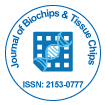Research Article
Modeling Development and Numerical Simulation of Transient Nonlinear Behaviors of Electric sensitive Hydrogel Membrane under an External Electric Field
| Zhen Yuan1,2* and Hua Li3 | ||
| 1Center for Strategic Communication, Arizona State University, POB 871205, Tempe, AZ 85287-1205, USA | ||
| 2Department of Biomedical Engineering, University of Florida, Gainesville, FL 32611, USA | ||
| 3School of Mechanical and Aerospace Engineering, Nanyang Technological University, Singapore | ||
| Corresponding Author : | Zhen Yuan Department of Biomedical Engineering University of Florida Gainesville, FL 32611, USA E-mail: yzhen.star@gmail.com |
|
| Received November 20, 2012; Accepted December 07, 2012; Published December 14, 2012 | ||
| Citation: Yuan Z, Li H (2013) Modeling Development and Numerical Simulation of Transient Nonlinear Behaviors of Electric-sensitive Hydrogel Membrane under an External Electric Field. J Biochips Tiss Chips 3:103. doi:10.4172/2153-0777.1000103 | ||
| Copyright: © 2013 Yuan Z, et al. This is an open-access article distributed under the terms of the Creative Commons Attribution License, which permits unrestricted use, distribution, and reproduction in any medium, provided the original author and source are credited. | ||
Related article at Pubmed Pubmed  Scholar Google Scholar Google |
||
Abstract
A multi-physics model is developed to predict the transient nonlinear behavior of electric-sensitive hydrogel membrane, based on a multi-phasic mixture theory. In the developed model involving chemo-electro-mechanics, the transient convection-diffusion equations for ionic concentrations incorporate the migration and diffusion terms; the Poisson equation is employed to compute the distribution of electric potential directly, and the transient hydrogel deformation is implemented easily by the continuity and momentum equations. To solve the present mathematical model consisting of transient nonlinear partial differential governing equations, a true meshfree, implicit numerical scheme is conducted for solution of convection-diffusion problem and hydrogel deformation, iteratively. Unlike the mesh-based
methods, the employed meshless Hermite Cloud Method (HCM) uses a fixed reproducing kernel approximation for construction of the interpolation functions, and employs the point collocation technique for discretization of partial differential boundary values and initial value problems. The transient responds of electric-sensitive hydrogels, including the membrane deformation, ionic concentrations and electric potentials, interior and exterior the membranes are numerically simulated, and the parameters having important influence on the transient hydrogel deformation are also investigated.

 Spanish
Spanish  Chinese
Chinese  Russian
Russian  German
German  French
French  Japanese
Japanese  Portuguese
Portuguese  Hindi
Hindi